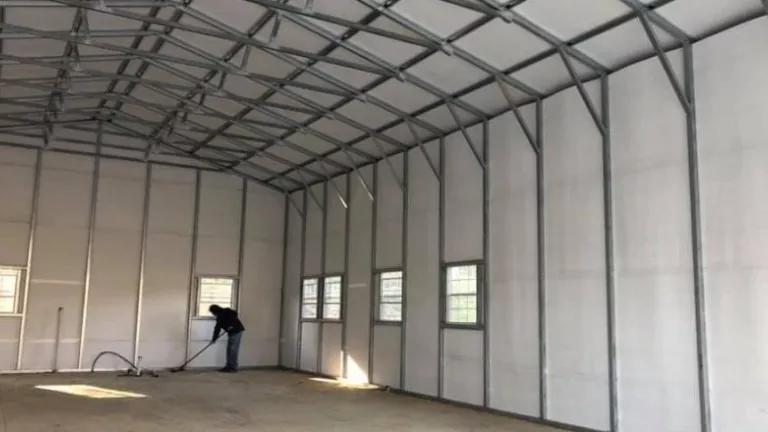Emissions of Ozone-Destroying CFC-11 Back on Decline (Pt. I)

This is part I of a 2-part blog series.
Emissions of CFC-11, a dangerous chemical that harms our planet’s life-protecting ozone layer, are back on the decline after an unexpected spike lasting more than half a decade, two new studies find. The unexpected emissions—which started in 2012 and probably stemmed from illicit production of CFC-11 to manufacture insulation foams, in violation of the terms of the Montreal Protocol—began to fall shortly after the scientific community brought the issue to the world’s attention in 2018.
The two new papers, both published today in the journal Nature, show that CFC-11 emissions started declining, both globally and regionally in eastern China, around the time the issue first came to the Montreal Protocol’s attention and have remained on a downward trajectory since. And, today, the CFC-11 emissions that remain have fallen to what previous atmospheric measurements suggest they should've been absent the unplanned uptick. The models don’t yet all agree, however; certain emissions inventory models suggest the current level of CFC-11 emissions is still higher than it should be.
The story of how these unexpected emissions were found and addressed offers some important lessons about putting “trust, but verify” to work at a modern multilateral forum. Now, with this troubling period in the Montreal Protocol’s history heading toward a fortunate finish, we have a chance to look back, take stock, and press forward to heal not only the ozone layer and our climate but also the treaty designed to protect them.
CFC-11 is an ozone-depleting chemical and potent greenhouse gas used widely as a refrigerant in building chillers, as a foam blowing agent in insulation foams, and as a solvent. Billions of pounds of CFCs were used around the world until scientists identified their harmful impacts on stratospheric ozone and the health and environmental risks from thinning the ozone layer. To address this global threat, countries adopted the international treaty known as the Montreal Protocol. Under the Montreal Protocol, to which every nation on earth belongs, the production and use of CFCs was gradually phased out worldwide.
CFC-11 production globally was completely banned a decade ago. Since then, the only CFC-11 emissions expected are leaks from existing products and equipment as they age and are eventually disposed of. These emissions are expected to decline further and further with time as the total amount of CFC-11 stored in products dwindles.
But after several years of CFC-11 emissions falling as expected, atmospheric monitoring showed an unexpected uptick after 2012. Scientists noticed the unusual changes and took time to double-check their results and understand their implications and then, in 2018, published the first peer-reviewed analysis of the problem. It quickly won the full attention of the Montreal Protocol.
Climate sleuths suspected that one or more countries were not complying with the ban on producing CFC-11. If sustained, these violations would have set back the recovery of the ozone layer by a decade, a major blow to the almost unconditional success the Montreal Protocol has enjoyed. Later research, triangulating on the sources of the emissions, showed that approximately 40-60% of the global uptick in emissions originated from an industrialized region in eastern mainland China.
The first paper in Nature, to which I contributed, looks at global emissions of CFC-11, whereas the second paper focuses on emissions from eastern China. The two papers agree that both globally and in China, CFC-11 emissions have returned to pre-2013 levels, before the anomalous behavior occurred. The emissions reduction observed in eastern China accounts for 60% of the global decline, similar to the region’s contribution to the global rise. It’s unclear where the remaining emissions cuts came from, but they are likely coming from a part of the globe not covered by the scientific communities’ networks of atmospheric monitoring stations.
The monitoring data watching eastern China also revealed that emissions of two additional chemicals associated with CFC-11 production—CFC-12 and carbon tetrachloride—were higher than expected during this time period, too. CFC-12 is commonly created as a byproduct when making CFC-11, and carbon tetrachloride is used as feedstock, so elevated emissions of these gases alongside CFC-11 has been expected. Indeed, many scientists had wondered why CFC-12 and carbon tetrachloride emissions hadn’t turned up alongside the CFC-11. CFC-12 and carbon tetrachloride emissions were elevated compared to expectations from 2013-2017, declining shortly before CFC-11 emissions began their decline. The overlap seems to corroborate the story that CFC-11 was illegally being made during this time.
Fortunately, according to the results of this new research, the CFC-11 problem seems to have been largely addressed. And it has happened quickly, which is crucial to putting the ozone layer back on track to recovery and avoiding needless further harm to our climate. The speed at which the emissions fell suggests that governments, including the government of China, successfully stepped up their enforcement and verification of their national treaty compliance.
The climate has also suffered some harm. In addition to their ozone impacts, all three of these chemicals are very potent greenhouse gases. The regional emissions paper shows that, cumulatively, the emissions detected from China are equivalent to 362 million metric tons of carbon dioxide—equal to the annual carbon dioxide emissions of the United Kingdom. And that’s only about one half of the total climate impact; elevated CFC-11 emissions elsewhere in the globe, beyond the watchful eye of region-specific monitoring, contributed the remainder.
This victory is just the beginning of the line. This story reveals the strengths of the Montreal Protocol community and the resolve of the nations that make up its parties, but it has also exposed several vulnerabilities that must be well patched to make sure this type of noncompliance doesn’t happen again. We need to learn our lessons well, and I’ll dig into a few of those in part II of this blog series.

